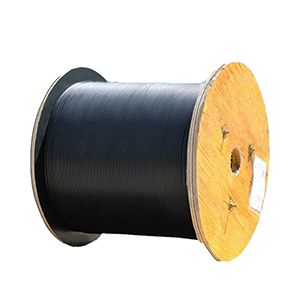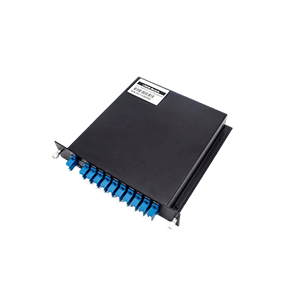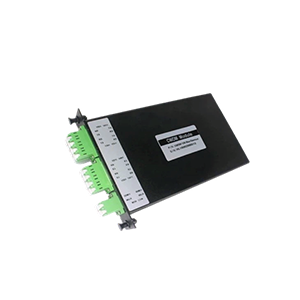As a keen enthusiast of network technology, I am very fascinated by the functions and application areas of the SFP-10G-LR (Small Form-factor Pluggable 10 Gigabit Long Range) optical module. In this article, I will introduce you to the basic principles, application fields of SFP-10G-LR optical modules and its importance as a solution to meet the needs of long-distance high-speed data transmission.
We will also discuss the features and benefits of this optical module, including transmission distance and speed, as well as fiber types and connection methods. I will also provide important information on the technical standards, compatibility and interface types of SFP-10G-LR optical modules, as well as guidance on deployment and configuration.
Introduction to SFP-10G-LR optical module
Definition and rationale:
SFP-10G-LR is a small 10Gbps optical module, also known as SFP+ LR (Long Range). It is a pluggable module for fiber optic communications, typically used for applications requiring high-speed data transmission over long distances. The SFP-10G-LR optical module is based on the SFP+ interface standard and has a hot-swappable function that can be directly inserted and unplugged into the slot of a compatible device.
The basic principle of the SFP-10G-LR optical module is to use optical fiber to transmit data. It includes a transmitter and a receiver. The transmitter converts the electrical signal into an optical signal, which is then transmitted through optical fiber. The receiver receives the optical signal and converts it back into an electrical signal to transmit data.
In short, the SFP-10G-LR optical module is an optical module used to meet the needs of long-distance high-speed data transmission. It transmits data through optical fiber, supports high-speed data transmission and long-distance transmission, and is compatible with compatible devices and interfaces, providing a flexible and reliable solution.
Application fields of SFP-10G-LR optical modules
SFP-10G-LR optical modules are widely used in long-distance network connections, mainly due to their ability to support high-speed and long-distance data transmission. The following are some typical application scenarios:
-
Data center interconnection: In a data center environment, SFP-10G-LR optical modules can be used to connect equipment between different computer rooms, floors or data centers. It can meet high bandwidth requirements and support long-distance data transmission, making the interconnection between data centers more efficient and reliable.
-
WAN connection: SFP-10G-LR optical module can be used for wide area network (WAN) connection to connect remote offices, branches or networks in different regions. It can transmit data through optical fiber, supports high-speed data transmission and long-distance connections, and provides enterprises with reliable remote communication and data exchange.
-
Long-distance network expansion: SFP-10G-LR optical modules can also be used to expand the coverage of existing networks. By installing the SFP-10G-LR module on network equipment, long-distance data transmission can be achieved, extending the network connection to further locations to meet the needs of network expansion.
SFP-10G-LR optical modules are also widely used in optical communication systems, especially in scenarios that require high-speed and long-distance transmission. The following are some typical application scenarios:
-
Optical fiber transmission system: SFP-10G-LR optical module can be used to build an optical fiber transmission system to transmit data in the form of optical signals. It can support high-speed data transmission and long-distance transmission, such as transmitting data in a metropolitan area network (MAN) or wide area network (WAN).
-
Optical fiber communication network: SFP-10G-LR optical module can be used to build an optical fiber communication network and connect different communication nodes and equipment. It can support high-speed data transmission and long-distance transmission, meeting the requirements for network bandwidth and transmission distance.
-
Optical transmission system: SFP-10G-LR optical module can be used in optical transmission systems, such as video transmission, medical image transmission and other applications. It can provide high-speed data transmission and long-distance transmission capabilities, ensuring high-quality image and video transmission.
Features and advantages of SFP-10G-LR optical module
Transmission distance and rate:
The SFP-10G-LR optical module has the following features and advantages:
-
Long-distance transmission: The SFP-10G-LR optical module is designed for long-distance transmission and can usually cover a transmission distance of tens of kilometers. This makes it useful in applications that require data transmission over long distances, such as network connections across cities or regions.
-
High-speed data transmission: SFP-10G-LR optical module supports data transmission rates up to 10 Gbps. This makes it ideal for applications with high bandwidth requirements, such as data center interconnects, enterprise networks, and wide area networks. It can handle large amounts of data traffic and provide fast and reliable data transfer.
Fiber optic types and connections:
SFP-10G-LR optical modules usually use single-mode fiber (SMF) for transmission. Single-mode optical fiber has smaller transmission loss and higher transmission bandwidth, and is suitable for long-distance transmission and high-speed data transmission.
The common connection method is to use the LC (Lucent Connector) interface. The LC interface is a small fiber optic connector with low insertion loss and high-precision centering performance. It is widely used in optical fiber communications and network equipment, including SFP-10G-LR optical modules. The LC interface provides reliable connection, facilitates installation and removal, and supports high-speed data transmission.
Technical standards and specifications for SFP-10G-LR optical modules
Optical module structure:
SFP-10G-LR optical modules usually have the following structural features:
-
Number of ports: SFP-10G-LR optical module usually has an optical fiber interface port for connecting optical fiber transmission media. This port uses an LC interface, which is a common fiber optic connector type.
-
Fiber type: SFP-10G-LR optical module uses single-mode fiber (SMF) for transmission. Single-mode optical fiber is suitable for long-distance transmission and high-speed data transmission, with smaller transmission loss and higher transmission bandwidth.
-
Power supply: The SFP-10G-LR optical module usually provides power through the device where the module slot is located, such as a switch or router. It relies on the device’s power supply to operate.
letter of agreement:
The SFP-10G-LR optical module supports a variety of communication protocols, including but not limited to the following:
-
Ethernet: The SFP-10G-LR optical module is compatible with Ethernet protocols, including Gigabit Ethernet (1 Gigabit Ethernet) and 10 Gigabit Ethernet (10 Gigabit Ethernet). It can be used in Ethernet applications such as data center interconnects, enterprise networks, and wide area networks.
-
Fiber Channel: The SFP-10G-LR optical module also supports the Fiber Channel protocol, which is a high-speed serial data transmission protocol for storage area networks (SAN). It can be used to connect storage devices and storage networks.
In addition to the above communication protocols, the SFP-10G-LR optical module can also support other specific protocols and applications, depending on the design of the optical module and the manufacturer’s specifications.
Compatibility and interface types of SFP-10G-LR optical modules
Compatibility points:
The SFP-10G-LR optical module has certain compatibility points, including the following:
-
Equipment compatibility: SFP-10G-LR optical modules are usually compatible with equipment that supports SFP+ (Small Form-factor Pluggable Plus) interface. This includes network equipment such as switches, routers, servers, etc. The SFP+ interface is a small, high-speed serial interface that supports data transfer rates of 10 Gbps.
-
Fiber optic compatibility: The SFP-10G-LR optical module uses single-mode optical fiber for transmission, so it needs to be compatible with equipment and optical fibers that support single-mode optical fiber transmission. Make sure to use single-mode fiber that matches the SFP-10G-LR optical module for optimal performance and compatibility.
-
Protocol compatibility: The SFP-10G-LR optical module has certain compatibility requirements in terms of communication protocols. It is usually compatible with common communication protocols such as Ethernet and Fiber Channel to meet the needs of different application scenarios.
Interface Type:
Common interface types of SFP-10G-LR optical modules include:
-
LC interface: SFP-10G-LR optical module usually uses LC (Lucent Connector) interface to connect to optical fiber. The LC interface is a small fiber optic connector with low insertion loss and high-precision centering performance. It has become one of the standard interfaces in optical fiber communications and network equipment.
-
SFP+ interface: The SFP-10G-LR optical module itself uses the SFP+ interface. SFP+ is a small, high-speed serial interface that supports data transfer rates of 10 Gbps. It provides hot-swappable and programmable functions, making the installation and configuration of optical modules more flexible and convenient.
It should be noted that although the SFP-10G-LR optical module uses the SFP+ interface, its physical size is the same as the traditional SFP optical module, so in some devices, it can also be compatible with the SFP interface, but only at 10 Gbps. speed work.
In summary, the SFP-10G-LR optical module is compatible with devices that support the SFP+ interface and uses the LC interface to connect to the optical module.
Deployment and configuration of SFP-10G-LR optical module
Optical module installation:
The following is the installation guide for the SFP-10G-LR optical module, including connection and fixing steps:
-
Turn off the equipment: Before installing the optical module, make sure that the relevant equipment is turned off and disconnected from the power supply.
-
Insert the optical module: Carefully insert the SFP-10G-LR optical module into the optical module slot of the device. Make sure it is inserted in the correct direction and push it into the slot all the way to the bottom.
-
Connect the optical fiber: Use a suitable single-mode optical fiber connector (usually LC interface) to connect the optical fiber to the optical fiber interface of the SFP-10G-LR optical module.
-
Fix the optical module: After ensuring that the optical module has been correctly inserted into the slot, use appropriate means to fix the optical module on the device. This can include snaps or screws that rotate or lock the optical module.
-
Repower on: After completing the installation, reconnect the power supply of the device and start the device.
Network Configuration:
The network configuration of the SFP-10G-LR optical module involves the following adjustments and settings:
-
Port configuration: Configure the port settings related to the SFP-10G-LR optical module according to the device’s operating system and management interface. This may include enabling and configuring specific ports, specifying speed and duplex modes, and setting other related parameters.
-
Transmission parameter adjustment: Depending on the actual network requirements and optical fiber transmission environment, the transmission parameters of the SFP-10G-LR optical module may need to be adjusted. This may include transmit power, receive sensitivity, equalizer settings, etc. These parameters can typically be configured through the device’s management interface or command line interface.
-
Compatibility check: Before configuring the SFP-10G-LR optical module, ensure the compatibility of the equipment and optical fiber. Verify that the device supports the SFP+ interface, and that the fiber type and transmission distance match the SFP-10G-LR optical module.
-
Network test: After the configuration is completed, it is recommended to conduct a network test to verify the normal operation of the SFP-10G-LR optical module. This can include testing of sending and receiving data to ensure reliability and performance of data transmission.
Note that specific deployment and configuration steps may vary depending on the device and network environment. Therefore, before proceeding with installation and configuration, it is recommended to refer to the manufacturer’s documentation and guides for the relevant device for accurate guidance and instructions.
Summarize:
As a reliable solution, the SFP-10G-LR optical module provides excellent performance to meet the needs of long-distance high-speed data transmission. By understanding its basic principles, application fields and technical standards, we can better utilize the SFP-10G-LR optical module and achieve high-speed, reliable data transmission in long-distance network connections and optical communication systems.
Whether in terms of transmission distance and rate, or in terms of fiber type and interface type, the SFP-10G-LR optical module shows excellent performance and flexibility. Hopefully this article has provided you with valuable information to help you become more successful in the world of networking technology.
- What is SFP-10G-LR?
- What is the difference between SFP-10G-LR-S and SFP-10G-LR?
- What is 10G SFP module?
- What is SFP optical module?
- What is SR and LR in SFP?
- What is LR and SR in fiber?
- What is Cisco SFP 10G LR S?
- What is SFP-10G-SR used for?
- What is the range of LR SFP+?
- What country is SFP-10G-LR from?
- What are the different types of 10G SFP?
- How do I know if my SFP is 10G?
-
100G OSFP DCO Coherent MR Reach Transceiver
-
100G QSFP-DD DCO Coherent Optical Transceiver
-
100G QSFP28 1310nm 10km LC Transceiver Module
-
100G QSFP28 1310nm 10km Single Lambda Optical Transceiver
-
100G QSFP28 1310nm 500m Single Lambda Optical Transceiver
-
100G QSFP28 BIDI 100m LC Optical Transceiver
-
100G QSFP28 BIDI 1271nm 10km lc Transceiver Module
-
100G QSFP28 BIDI 1280nm 20km Transceivers
-
100G QSFP28 BIDI 1291nm 20km lc Transceiver Module




